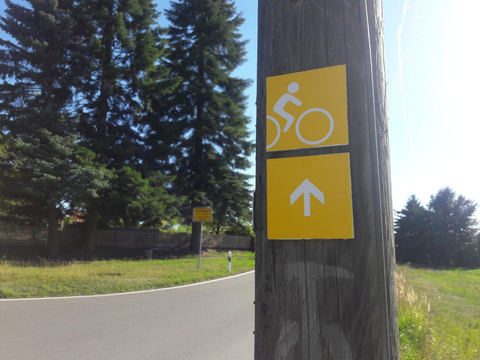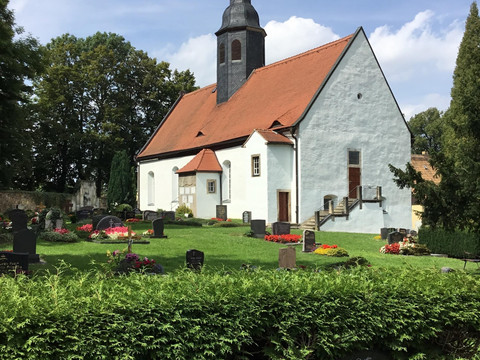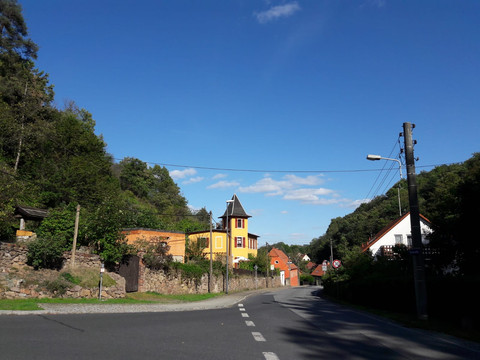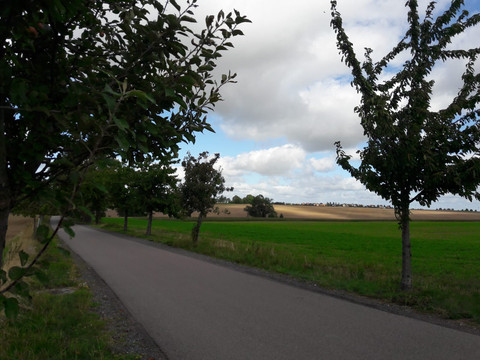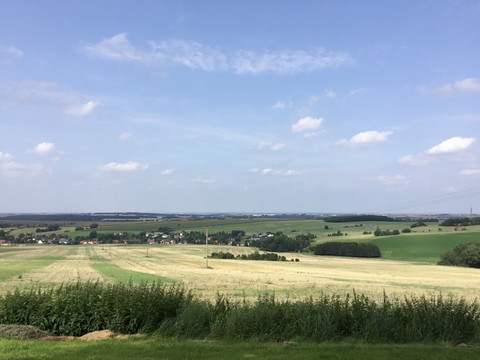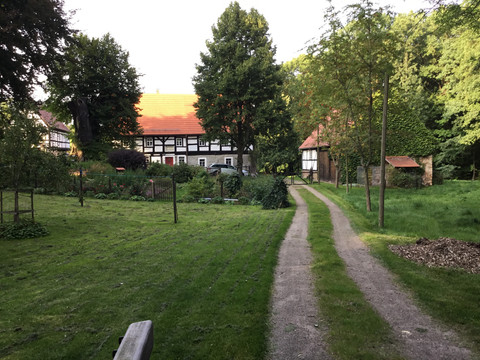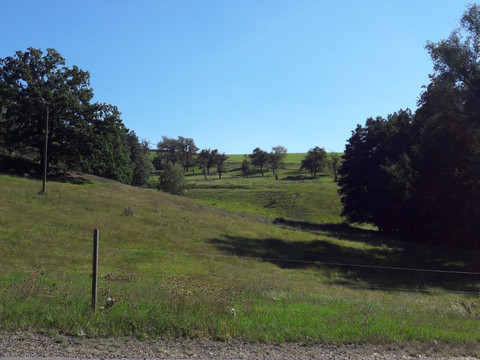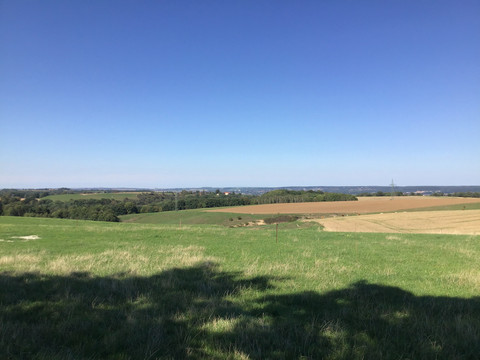Dresden Adventure Region Cycle Route 7:Through valleys on the left bank of the river Elbe to the edge of the "Most Beautiful Forest in Saxony Route length: 55 km Profile: difficult, very long ascents Starting point: Niederwartha (Elbe cycle path, height of Elbe bridge)
Only a few meters from the recommended starting point, the Niederwartha pumped storage power plant catches the eye. It was put into operation in 1929 and was considered the first efficient hydroelectric power plant of its kind at the time. Not far from the lower reservoir, with its Bauhaus-style turbine house, you will drive to Niedergohlis. Before that, it is worth taking a detour to the Gohlis Windmill, built in 1832 and located directly on the Elbe River. There you can visit the mill museum.
The route leads up to Rennersdorf and is accompanied by a nature trail, which provides interesting cultural and historical facts on numerous panels. Passing the upper reservoir, you will reach the Steinhübel lookout point, which offers a beautiful panoramic view. In Kesselsdorf you can visit the local history museum. The path then leads to the spa town of Hartha. The "state-recognized resort" offers offers of active recreation, health maintenance and prevention, as well as environmental education and education.
From Hartha, you can take a side trip to the Forest Botanical Garden. The 33-hectare garden was founded in 1811 by Heinrich Cotta, making it one of the oldest scientific collections of woody plants in the world. On the edge of the Tharandt Forest you will reach the village of Grund. Numerous distant views, evidence of former mining activities and geologically significant rock outcrops, such as the porphyry fan in Schmieders Graben, offer constant variety along this section.
In the village of Grund, also known as Little Tyrol, is the production site of the oldest smokehouse. The Knox company has been producing incense here for over 135 years as a remedy for whooping cough and asthma, as well as a Christmas decoration. In the Incense Museum you can learn about the history and production. Not far from the factory premises, those interested in geology can learn interesting facts about the various local rock types on a newly designed path of rocks. Following this, you will travel along a section of the former Wilsdruffer narrow-gauge rail network to Helbigsdorf.
Along the Kleine Triebisch you will reach Klipphausen. Worth seeing here is the Lehmannmühle, a historic flour mill from the 17th century. On the last kilometers of the route, you cross the Saubach valley and reach the Elbe cycle path in Constappel. The pilgrimage church of St. Nicholas, which was already mentioned in documents at the end of the 14th century, is today one of the oldest churches in the Meißner Land. It houses valuable furnishings and various art treasures. Following the Elbe cycle path, you will return to Niederwartha.
Note: In the town halls of the adventure region you can purchase the brochure "Cycling & Discovering in the Dresden Adventure Region" with further information.
www.erlebnisregion-dresden.de
